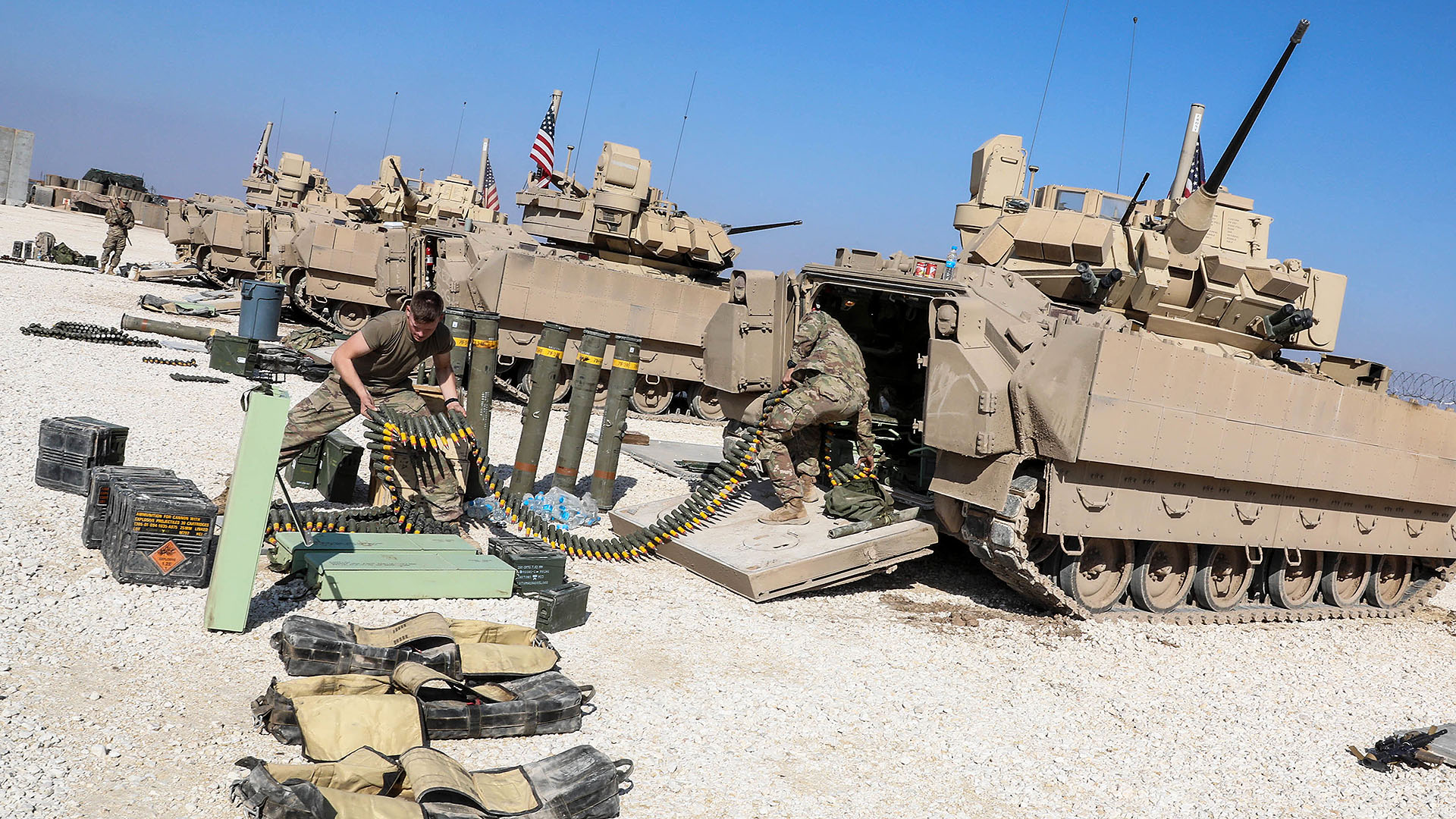Claiming success in the fight against ISIS, the Pentagon on Friday officially announced it is consolidating bases in Syria and drawing down troops from that nation. It confirms our previous reporting that about half of the 2,000 troops in Syria would be moved elsewhere. You can read more about that here.
“This consolidation reflects the significant steps we have made toward degrading ISIS’ appeal and operational capability regionally and globally,” said the statement issued by Chief Pentagon spokesman Sean Parnell. “This deliberate and conditions-based process will bring the U.S. footprint in Syria down to less than a thousand U.S. forces in the coming months.”

Parnell’s statement does not specify which of the eight bases that the U.S. operates in Syria are closing. However, a U.S. defense official told The War Zone that U.S. forces will be leaving the Mission Support Site Green Village and Mission Support Site Euphrates.
“This will be a gradual process as we slowly pare down the number of bases in Syria,” said the official, speaking on condition of anonymity to discuss operational details. The New York Times was the first to report that detail. The Times added that a third, much smaller facility, would also be shuttered. The publication reported that the drawdown is already underway.

U.S. forces in Syria are mostly based in the northeastern part of that country with the stated mission of continuing the fight against ISIS. The Sunni jihadi group had set up a so-called caliphate in much of Syria and Iraq, but was defeated to the point of holding little to no land in 2019 during President Donald Trump’s first term. There is also a base in southern Syria, called Al-Tanf, located along the borders of Jordan and Iraq. U.S. forces across Syria have been subjected to attacks by Iranian-backed militias as well as ISIS, prompting frequent kinetic responses.
“During the last 10 years, the Global Coalition to Defeat ISIS has made major gains, including those which led to the territorial defeat of ISIS in 2019,” Parnell stated. “Additionally, U.S. Central Command has launched dozens of air strikes over the last year to further degrade ISIS capabilities and deny them the ability to regain strength.”
“As this consolidation takes place, consistent with President Trump’s commitment to peace through strength, U.S. Central Command will remain poised to continue strikes against the remnants of ISIS in Syria,” Parnell continued. “We will also work closely with capable and willing Coalition partners to maintain pressure on ISIS and respond to any other terrorist threats that arise.”
Though ISIS has been greatly degraded, the group still represents a threat, one that has been exacerbated by the overthrow last December of dictator Bashar Al-Assad by the former al-Qaeda rebel group known as Hayat Tahrir al-Sham (HTS).

Officials from the Kurdish-led, U.S.-backed Syrian Democratic Force (SDF), which were key to defeating ISIS, “have sounded the alarm, warning that the [ISIS] threat is greater than ever as the extremist group exploits the security vacuum left from the Syrian regime’s collapse,” The Guardian reported earlier this year. ISIS “activity has surged in northern Syria and sleeper cells, which for years lay low in the Syrian desert, have once again mobilized.”
Despite the drastic reduction in America’s footprint in Syria, Parnell insisted it won’t affect the Pentagon’s ability to strike at the group when needed.
“The threat of terrorism is not confined to the Middle East, and we will be vigilant across every continent to ensure that ISIS has nowhere to hide,” he explained. “We are committed to ensuring our partners’ ability to further degrade ISIS and other terrorists within the region.”
The Defense Department (DoD) “continues to maintain a significant amount of capability in the region and the ability to make dynamic force posture adjustments based on evolving security situations on the ground,” he stated.

Adding to regional security concerns, there are tens of thousands of foreign ISIS fighters being held in mostly Kurdish-run prisons in Syria’s northeast.
“An essential line of effort in degrading ISIS strength is reducing the populations of displaced and detained ISIS-linked individuals in camps and detention facilities in northeast Syria,” Parnell exclaimed. “We call on the international community to repatriate their nationals.”
In the next 60 days, U.S. “commanders will assess whether to make additional cuts,” the Times reported. “Commanders have recommended keeping at least 500 U.S. troops in Syria, one of the officials said.”
Trump, however, has expressed deep skepticism about keeping any U.S. troops in the country. As we noted previously, he called for a sudden and complete withdrawal during his first term in 2019, however, that was never fully implemented before he left office.
It remains to be seen whether Trump will follow the advice of his commanders or decide to completely pull up stakes from Syria.
Contact the author: howard@thewarzone.com
